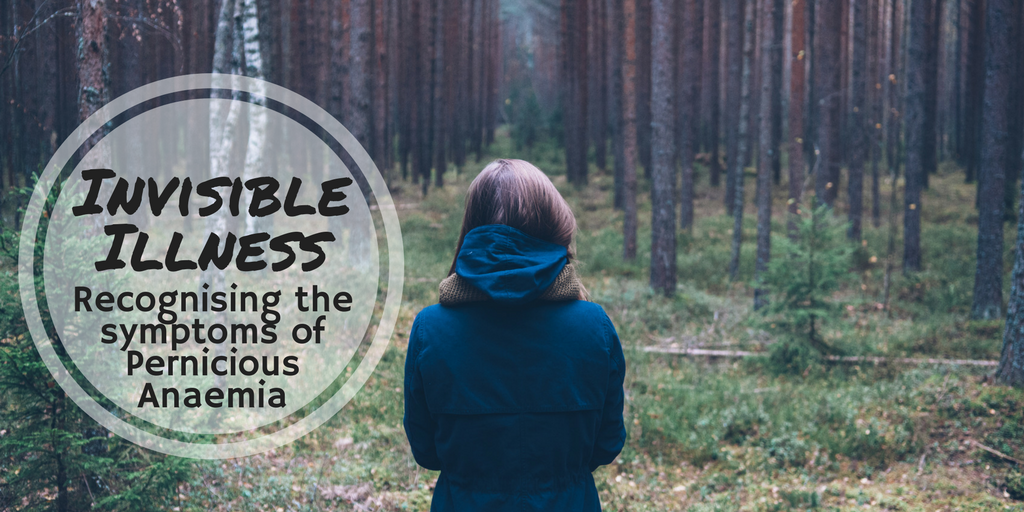
Pernicious Anaemia (PA) is an invisible illness caused by deficiency in vitamin B12 owing to problems absorbing it from food.
Everyone is different and sufferers of pernicious anaemia will experience the symptoms of the condition to varying degrees. Some patients will have all of the symptoms listed below while others will recognise only a few. This list has been compiled over a number of years and shows what a wide range of symptoms there can be. There are two problems with this wide range. First, many of the symptoms listed below are associated with other medical conditions, which often leads to confusion with other invisible illness and misdiagnosis. Secondly, because there are so many symptoms associated with pernicious anaemia, it makes it difficult for doctors to identify the symptoms specific to the disease – thus making an early diagnosis even less certain.
Common general symptoms of Pernicious Anaemia
- Shortness of breath – ‘the sighs’
- Extreme fatigue
- Brain fog
- Poor concentration
- Short-term memory loss
- Confusion (‘handbag in the fridge syndrome’)
- Nominal aphasia (forgetting the names of objects)
- Unaccountable and sudden bouts of diarrhoea, often following a spell of constipation
- Clumsiness/lack of coordination
- Brittle, flaky nails; dry skin anywhere on body
- Mood swings, ‘tear jags’, heightened emotions
- Sleep disturbance
- Even though patient is exhausted, is unable to sleep
- Waking up still tired, even after many hours’ sleep
Neurological symptoms of Pernicious Anaemia
- Balance problems
- Dizzy/faint
- ‘Shoulder bumps’ – frequently bumping into or falling against walls
- General unsteadiness, especially when showering and dressing
- Inability to stand up with eyes closed or in the dark
- Vertigo – inability to cope with heights, linked to the need for a visual reference as compensation for damage to the brain’s balance mechanism
- Numbness/tingling – especially in hands, arms, legs, feet
- Burning sensation in legs and feet – Grierson-Gopalan syndrome
- Tinnitus – ringing/screeching/howling in the ear or ear
- Neuropathic pain/fibromyalgia – often on only one side of the body
- Irritability/frustration/impatience; desire for isolation, quiet and peace; aversion to bright lights and crowded spaces
Skin problems associated with Pernicious Anaemia
- Hair loss – can range from moderate to sever; premature greying of hair
- Psoriasis/eczema/acne
- Rosacea – reddening of the skin around the nose and cheeks
- Vitiligo – white patches that develop on the skin
Other medical problems associated with Pernicious Anaemia
- Poor digestion
- Arrhythmia – irregular, fast or slow heartbeat
Autoimmune conditions associated with Pernicious Anaemia
- Rheumatoid arthritis
- Hypo- or hyper-thyroidism – almost exclusively among females
- Coeliac disease – sensitivity to wheat and/or wheat products
- Myasthenia gravis – weak muscles leading to problems swallowing, chewing and opening eye(s)
- Psoriatic arthritis
Vitamin B12 deficiency can be detected with a blood test, and if this deficiency is then determined not to be caused by diet it may be a clue that Pernicious Anaemia is the underlying invisible illness.
To learn more about Pernicious Anaemia diagnosis and treatment read What you need to know about Pernicious Anaemia and Vitamin B12 Deficiency by Martyn Hooper, founder of The Pernicious Anaemia Society.
